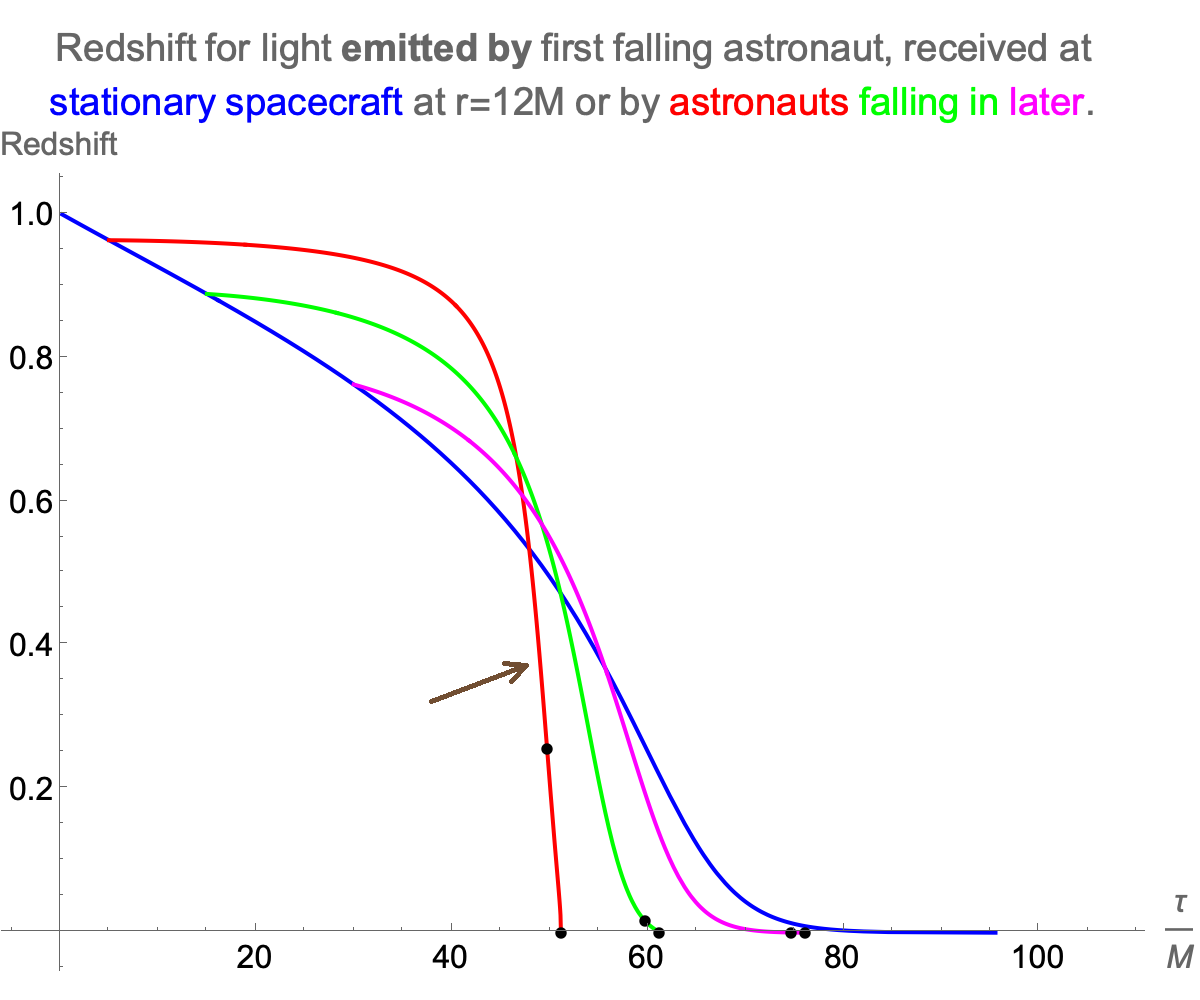John Carlos Baez on Nostr: nprofile1q…cyu7x - thanks, that's very helpful! I very dimly remembered it from a ...
nprofile1qy2hwumn8ghj7un9d3shjtnddaehgu3wwp6kyqpqt76as6gjr7pzg0taz40e55smjjegmj89ud7g056aqed90hs7cynsacyu7x (nprofile…yu7x) - thanks, that's very helpful! I very dimly remembered it from a long-ago conversation (as if redshifted almost beyond the point of visibility).
Can you explain in words why the second astronaut initially sees the first astronaut less severely redshifted than the stationary observer does, but then later sees them *more* redshifted, e.g. at the point I've marked with a brown arrow?
The former makes intuitive sense to me, but the latter does not.
(I'm using "more redshifted" to mean a smaller number on the vertical axis of your graph, which disconcerts me, but seems in accord with standard usage.)
I have more questions but I don't want to bombard you!

Can you explain in words why the second astronaut initially sees the first astronaut less severely redshifted than the stationary observer does, but then later sees them *more* redshifted, e.g. at the point I've marked with a brown arrow?
The former makes intuitive sense to me, but the latter does not.
(I'm using "more redshifted" to mean a smaller number on the vertical axis of your graph, which disconcerts me, but seems in accord with standard usage.)
I have more questions but I don't want to bombard you!
